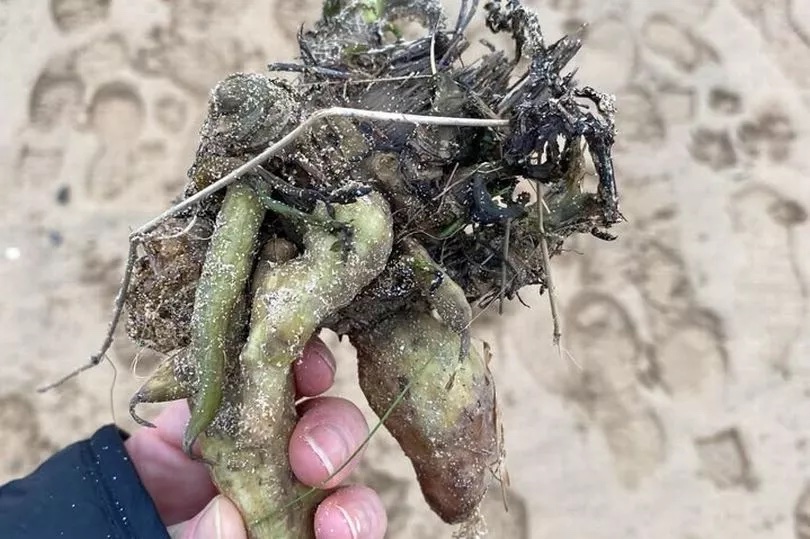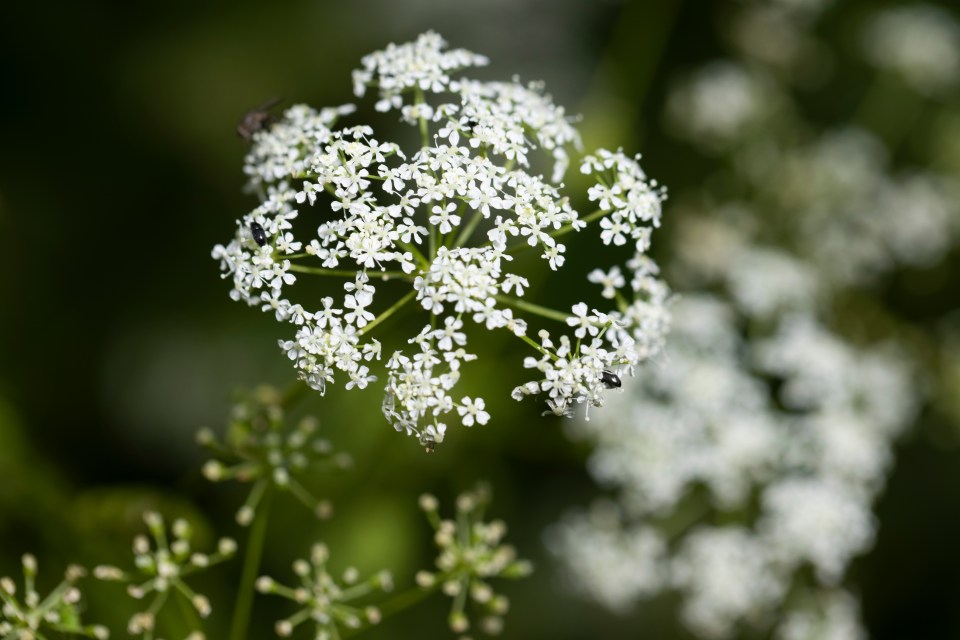DOG owners have been warned of a deadly plant worse than Japanese knotweed – with no antidote – washing up on UK shores.
At least four pooches have already died after falling victim to the poisonous vegetation found at popular tourist hotspots.
The potentially fatal plant, called hemlock, has been washing up on Cornwall beaches much to the concern of locals.
Also known as hemlock water-dropwort and hemlock root, it is common in shallow water.
The plant is often found near rivers or fresh water but can be washed up on beaches after storms.
Sightings have been reported across the south and north coast in recent months, as reported by Cornwall Live.
An urgent warning has now been issued to protect other dogs, and humans, from the poisonous plant – which has no antidote.
A spokesperson from Cornwall Council said: “There are reports of hemlock roots washing up on beaches in the Fistral and Little Fistral area of Newquay.
“They look and smell like parsnips and can be poisonous to animals.
“The roots are often washed down from riverbanks during the winter.
“As a precaution, we’re putting up signs urging dog owners to be vigilant and keep pets on a lead.”
Polzeath Beach Ranger Service also warned: “This is arguably the most toxic plant native to Britain and is dangerous to both humans and dogs.
“Water dropworts contain the toxin oenanthotoxin, which attacks the central nervous system and causes the body to shut down. It is believed the ancient Sardinians used this plant in a potent cocktail used for euthanasia.
“The roots contain the most toxin, the stem has a lot, and the leaves slightly less. Apparently, if you just touch the leaves and then eat a sandwich, say, then you’re going to get really ill.
“Please keep an eye on what your children and dogs are doing at all times. No one is being encouraged to collect and dispose of the plant if you see it, but please take suitable precautions if you do.”
Symptoms of hemlock poisoning
Hemlock poisoning will show symptoms after around 30 minutes, or up to 3 hours.
The plant can cause a painful rash or burning on the eyes if touched.
Ingesting any part of the plant can lead to poisoning which can lead to respiratory failure.
Symptoms include:
- Trembling
- Burning sensation in digestive tract
- Increased salivation
- Dilated pupils
- Muscle pain and weakness
- Decreased heart rate
- Loss of speech
- Convulsions
- Unconsciousness
If you believe you have symptoms, you should seek medical attention immediately.
If possible, take a sample of the plant if it’s safe do to so by using plastic gloves – or take photos.
Do not try and make the infected throw up.
This comes as dog owners have been issued many other important warnings.
Dr Hunter Finn took to TikTok to reveal the small sign that could mean your pooch needs an emergency spinal cord assessment.
Another veterinarian also raised the alarm about five foods you should never give your pet as some could be lethal.
Raisins, onions and garlic were just a few of the examples the vet gave and even revealed that dried grapes can cause kidney failure in dogs.
One more expert revealed the reason why you need to keep common bathroom items away from your dog.
What Are Hemlock Roots?
Hemlock Roots may look like a “beautiful” flower, but they hold a deadly secret.
The plant, which looks like a parsnip, could be lethal to humans and animals.
Hemlock could easily kill if it was eaten as it contains fatal toxins.
The toxins grow naturally and include coniine and a gamma-coniceine, which cause muscular paralysis.
Anyone who ingests the harmful plant could end up with respiratory failure – which could lead to death.
Only a tiny amount of Hemlock can prove fatal to a human or to livestock.
It usually grows in wet, marshy places and is often confused for its non-poisonous lookalikes such as wild carrots or parsnips.
If accidentally eaten, symptoms of poisoning include seizures, nausea, vomiting, abdominal pain, tremors, confusion, weakness or dizziness.
The plant was previously found on a beach in Cornwall following a storm.


